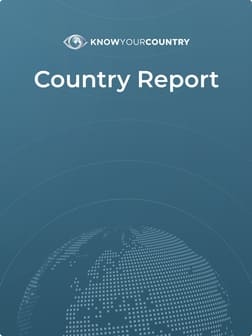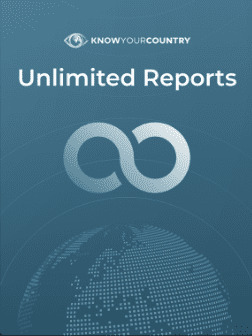
Poland Country Summary
Sanctions
No
FATF AML Deficient List
No
Terrorism
Corruption
US State ML Assessment
Criminal Markets (GI Index)
EU Tax Blacklist
Offshore Finance Center
Background Information
Anti Money Laundering
FATF Status
Poland is not on the FATF List of Countries that have been identified as having strategic AML deficiencies
Compliance with FATF Recommendations
The last Mutual Evaluation Report relating to the implementation of anti-money laundering and counter-terrorist financing standards in Poland was undertaken in December 2021. According to that Evaluation, Poland was deemed Compliant for 2 and Largely Compliant for 21 of the FATF 40 Recommendations. It remains Highly effective for 0 and Substantially Effective for 3 of the Effectiveness & Technical Compliance ratings.
US Department of State Money Laundering assessment (INCSR)
Poland was deemed a Jurisdiction of Concern by the US Department of State 2016 International Narcotics Control Strategy Report (INCSR). Key Findings from the report are as follows: -
Poland is a high-income economy according to World Bank definitions and the eighth largest economy in the European Union. Poland lies directly along one of the main routes used by narcotics traffickers and organized crime groups between the former Soviet Union republics and Western Europe. However, Poland is not considered a regional financial center, nor is it considered a particularly important international destination for money laundering.
According to the Government of Poland, evasion of customs duties and taxes by organized Polish criminal elements and others remains the largest source of illegal funds. Authorities identified virtual currencies, specifically bitcoin, as an increasingly significant avenue for money laundering. Authorities continue to report that Asian (primarily Chinese and Vietnamese) organized criminal elements are increasingly remitting profits from tax evasion and the sale of counterfeit goods via money transfers and couriers. The majority of Asian organized crime activity occurs at the Chinese Trade Center located in Wolka Kosowska, approximately 25 kilometers from Warsaw. There are also smaller Asian shopping centers located in Rzgow (near Lodz) and Jaworzno (near Katowice) where organized crime activity is suspected. The principal scheme involves the extreme undervaluing of imported goods through the falsification of invoices, which are used to determine the customs value of products and the applicable value added tax (VAT). The authorities also suspect the sale of counterfeit goods and illegal drug trafficking at these markets.
Local companies and organized crime groups use fuel and cigarette smuggling to avoid excise taxes and as a major source of laundered proceeds. The practice is particularly significant along the Kaliningrad border. Money laundering through trade in scrap metal and recyclable material continues to be a growing trend, as is organized criminal activity in the financial services area through internet banking, credit cards, and electronic systems for money transfers. The Finance Ministry maintains the effectiveness of actions against money laundering involving transfer of money to tax havens is improving due to the increase in cooperation agreements concluded with counterparts in such countries, including Russia. Authorities believe some money laundered in Poland originates in Russia or other countries of the former Soviet Union. The nation’s banks, insurance companies, brokerage houses, and casinos are also major venues of money laundering.
Poland is an increasingly important international center for business email compromise (BEC) money laundering scams, in which sophisticated cybercriminals target businesses working with foreign suppliers or those who regularly perform wire transfer payments. In these scams, cybercriminals compromise legitimate business email accounts through social engineering or computer intrusion techniques to conduct unauthorized fund transfers. The criminals then launder the money through Polish banks before transferring the funds to their final destinations.
Sanctions
There are no international sanctions currently in force against this country.
Bribery & Corruption
Rating (100-Good / 0-Bad)
Transparency International Corruption Index 54
World Governance Indicator – Control of Corruption 68
Corruption is a problem for businesses operating in Poland, although its levels have decreased in recent years. Political corruption constitutes a challenge to fair business as politicians use their positions to gain benefits, and practices of nepotism and cronyism are widespread. Poland's Criminal Code offences include active and passive bribery, bribery of foreign officials, extortion and money laundering. However, the government does not prosecute these offences effectively, and officials engage in corruption with impunity. Sectors most prone to corruption are public services and public procurement. Despite facilitation payments and gifts being criminalised, these practices are widespread. For further information - GAN Integrity Business Anti-Corruption Portal
Economy
Poland’s economy has grown faster than the European Union average in recent years thanks to strong fundamentals and timely macroeconomic policies. Broad fiscal measures and monetary support cushioned the economic impact of the pandemic and eased the economic repercussions of Russia’s full-scale invasion of Ukraine. Poland’s GDP grew by 4.9 percent in 2022, despite high inflation, an energy crisis, and a marked slowdown in consumption. In 2023, the economy is likely to stagnate, due to weak consumption and investment activity. Unlocking disbursements of EU funding in 2023 will be essential for Poland to resume strong economic growth.
Russia’s full-scale invasion of Ukraine in February 2022 triggered an energy crisis as well as economic and social challenges. High inflation, paired with falling real wages and high energy prices, will likely continue to negatively impact the economy. To buffer the impact of rising prices, the government introduced an Anti-Inflationary Shield and an Energy Shield in 2022. The programs, which are gradually being phased out, included a temporary reduction in value added tax (VAT) on electricity, gas, petroleum, heating, and foodstuffs to prevent significant deterioration in consumption. A fiscal stimulus program, the Polish Deal, took effect in January 2022 but was quickly amended to further insulate the economy from the effects of the war and to eliminate Poland’s dependence on Russian hydrocarbons.
The Polish government has made gradual progress in simplifying administrative processes for businesses, supported by the introduction of digital public services, but weaknesses persist in the legal and regulatory framework. Investors point to low predictability and the outsized role of state-owned and state-controlled companies in the Polish economy as an impediment to long-term balanced growth. The government continues to push for the creation of state-controlled “national champions” that are large enough to compete internationally and lead economic development. Some organizations, notably private business associations and labor unions, have raised concerns that policy changes have been introduced quickly and without broad consultation, increasing uncertainty about the stability and predictability of Poland’s business environment. In the financial sector, legal risks stemming from foreign exchange mortgages constitute a source of uncertainty for some banks.
Despite a polarized political environment, the broad structures of the Polish economy are solid and foreign capital continues to flow into Poland. Foreign investors are not abandoning projects planned before the outbreak of Russia’s full-scale war in Ukraine and some are transferring activities from Ukraine and Belarus to Poland. Poland’s well-diversified economy reduces vulnerability to external shocks, although it depends heavily on the European Union (EU) as an export market. Foreign investors also cite Poland’s well-educated work force as a major reason to invest, as well as its proximity and tariff-free access to major markets such as Germany. U.S. firms represent one of the largest groups of foreign investors in Poland. The flow of annual of U.S. investment in Poland was estimated at over $4.2 billion by the National Bank of Poland in 2021; the stock at around $13 billion by the U.S. Bureau of Economic Analysis and $26 billion by the Warsaw-based American Chamber of Commerce (AmCham). The latter number includes indirect investment flows through subsidiaries located in other European countries.
In July 2022, the “Productivity Strategy 2030,” covering industrial policy, was adopted by the government. Created to address the most significant barriers to industrial activity, the strategy aims to create a digitized economy, including the automation, robotization and digitization of enterprises; to increase the use of technology in the economy; and to develop an algorithmic data-based economy. There are also investment and export opportunities in the energy sector—both immediate (natural gas), and longer term (nuclear, hydrogen, energy grid upgrades, photovoltaics, and offshore and onshore wind)—as Poland seeks to diversify its energy mix and reduce air pollution. Poland’s new 2040 Energy Strategy envisages three quarters of energy coming from zero-emission sources, including renewables and nuclear power. Against global and regional downtrends, the value of investments in venture capital matched 2021, which was a record-breaking year for venture capital transactions.
Defense remains a promising sector for U.S. exports. The Polish government began actively modernizing its military inventory even prior to the Russian invasion of Ukraine, and the war has only intensified these efforts. A law increasing the defense budget to 3 percent of GDP was adopted in March 2022, but Polish defense spending is reportedly expected to exceed 4 percent of GDP in 2023. Under the 2022 law, Poland also created an off-budget Armed Forces Support Fund to finance defense modernization beyond annual state budget allocations. Poland is also expected to receive compensation from the European Peace Facility
Information technology, cybersecurity, and infrastructure also show promise for U.S. exports, as Poland’s municipalities focus on smart city networks. The government seeks to expand the economy by supporting high-tech investments, increasing productivity and foreign trade, and supporting entrepreneurship, scientific research, and innovation through the use of domestic and EU funding. The Polish government is interested in the development of green energy, hoping to utilize the large amounts of EU funding earmarked for this purpose in the coming years and decades.
Under the 2021-2027 EU budget, Poland should receive $78.4 billion in cohesion funds and approximately $27 billion in grants and $40 billion in loan access from the EU Recovery and Resilience Facility, amounting to around 20 percent of Poland’s 2022 GDP. Though Poland’s budget assumes receipt of the funds, the recovery funds are frozen, and the cohesion funds are partially blocked largely as a result of rule of law concerns. As the largest recipient of EU funds, which have contributed an estimated 1 percentage point to Poland’s GDP growth per year, the loss or diminishment of these funds would have a profound negative impact.
Currently, Poland hosts more than 1.5 million refugees from Ukraine, and it has processed more than 10 million border crossings since the full-scale war began. The Polish government granted refugees from Ukraine the right of temporary residence and access to key public services, social assistance, and emergency housing for the most vulnerable. This large influx of refugees from Ukraine to Poland created a strong consumption stimulus that cushioned the impact of weakening exports due to the war. Poland now has the potential to become a reconstruction hub, and Polish officials are lobbying for full participation in prospective international reconstruction work. It is likely that foreign companies rebuilding Ukraine will operate through Poland, and Polish businesses will benefit from both their own participation in reconstruction, and through support and assistance to the international reconstruction effort.
The Polish and global economies are operating in conditions of high uncertainty. Any forecasts, therefore, are subject to a large margin of error. The state of the Polish economy and the validity of forecasts will depend on the further course of the war in Ukraine, the decision of refugees from Ukraine on whether to stay in Poland and provisions for their meaningful economic integration, and Poland’s relations with the EU.
Country Links
General Inspector of Financial Information (GIIF)

Buy Full Poland Report
$25 one time payment
- Risk Analysis
- Corruption
- Economy
- Sanctions
- Narcotics
- Executive Summaries
- Investment Climates
- FATF Status
- Compliance
- Key Findings

Unlimited Reports
$40 Monthly
